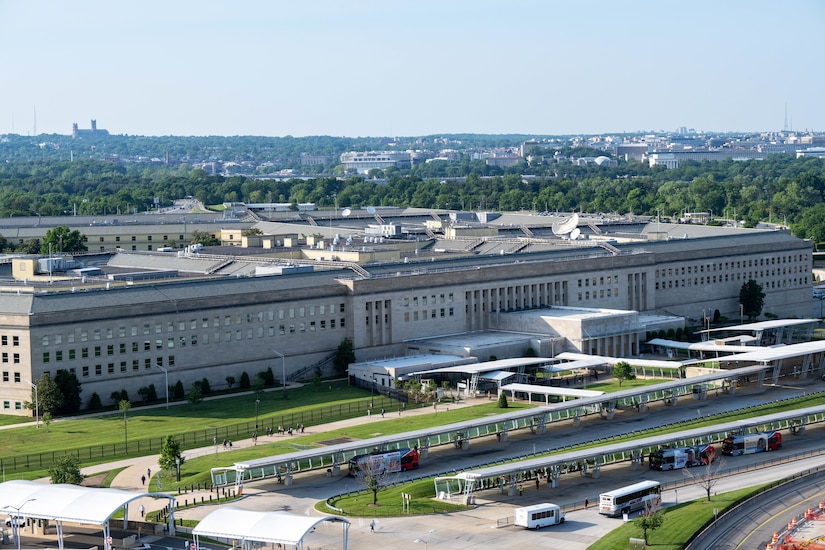SINGAPORE AIRSHOW: Boeing Using Drones, Data to Modernize Aircraft Maintenance
F-15SG
Wiki Commons photo via Eugene_Butler
SINGAPORE — While Boeing’s commercial aircraft business continues to face headwinds, the company’s military wing is harnessing the power of data and autonomy to maintain and analyze military aircraft more effectively to the benefit of the United States and its allies, a company official at the Singapore Airshow said.
The Republic of Singapore Air Force operates Boeing-made F-15SG fighters, and the country’s Chief of Air Force Maj. Gen. Kelvin Khong said in a written interview released Feb. 18 the aircraft will continue to be a part of Singapore’s next-generation fighter fleet, along with the F-35Bs that are set to start coming off the production line in 2026.
“The F-15SGs remain an important part of our fighter fleet,” Khong wrote. “The F-15SGs have been serving us well since 2009, and they are expected to continue to meet our operational needs. Nonetheless, we will continue to review our platform capabilities and refresh them when necessary … to meet our operational requirements.”
In 2022, Boeing and Singapore’s Defence Science and Technology Agency began a project to create a data exchange infrastructure to enable collaborative data analysis of the country’s F-15SGs. Torbjorn Sjogren, vice president of government services at Boeing Defense, Space and Security, said the project has been completed successfully.
The project has been “a very significant opportunity between [Boeing and Singapore] in terms of how we can gain data so we can bring [in] some of those next-generation product support tools” to ensure maintenance is “more prescriptive and preventative,” Sjogren said during a media briefing at the airshow Feb. 21. “That has been a significant driver of our performance-based contracts here, and what we continue to invest in.”
The data-sharing agreement “has allowed us to have a unique” amount of transparency between Boeing and Singapore, enabling the contractor and customer to operate “as a combined enterprise” and “understand between them and us what are the readiness issues that we’re having? What’s driving them?” he said.
“It is a significant effort,” and the Defence Science and Technology Agency and the Republic of Singapore Air Force “have been great partners in that regard,” he added.
In terms of potentially upgrading Singapore’s F-15SG fleet, Boeing must consider “how do we ensure that we are able to bring those modifications and those upgrades on board in a consistent and an affordable manner that doesn’t impact readiness?” Sjogren said.
While he wouldn’t speculate on the scope or timing of any upgrades as that is a government-to-government discussion between the United States and Singapore, Sjogren said the capability of the advanced F-15EX variant is “significant, and you can imagine those existing F-15 operators are eager to see how they will be able to avail themselves of that same capability.”
Indonesia signed a memorandum of understanding with Boeing to acquire up to 24 F-15EX aircraft in August, pending U.S. government approval. Sjogren noted Boeing already has AH-64 Apache helicopters in Indonesia, “so the support that we’re already doing, both with our customer together with local industry, allows us to leverage that experience” if the F-15EX sale is approved.
At home, Boeing is working with the U.S. Air Force and Pittsburgh-based small business Near Earth Autonomy to test out autonomous aircraft inspection technology. Using a drone to scan the exterior of an aircraft such as a C-17 transport plane, “the inspection can now be done in a fraction of the time without having to suspend maintainers six floors above the ground,” Sjogren said.
“We can do that inspection quicker, we can do it with better granularity and we can do it repetitively,” he continued. “The way the aircraft tracks and how we do that inspection, the next time that specific aircraft comes in, we can run that exact same track and thereby do a corollary on the digital printout from the first time we did it to the second time we did it. And thereby we can pinpoint [issues] in a manner that sometimes the human eye cannot see,” allowing for more accurate, affordable and safe inspections, which in turn allows “aircraft to get back out in terms of mission readiness better than we’ve ever done before.”
The autonomous inspection is also “platform agnostic,” having been tested on not only the Boeing-made C-17 but also a Lockheed Martin-produced C-5.
“Perhaps the most significant thing” about the autonomous inspection technology is the ability to do a tail-by-tail comparison of aircraft, which is a “degree of insight we haven’t had before,” Sjogren said. “To be able to do a tail-by-tail comparison provides you an extraordinary degree of ability to tailor solutions to that particular aircraft,” which then can be spread “throughout the entire fleet.”
A big focus for Boeing is working with innovative companies like Near Earth “that can bring tremendous value to us,” he said. “If we can bring our scale and we can bring their innovation, it allows us to bring differentiated solutions.
“Even here in Singapore, there are a number of companies — some of whom we are already in a financial relationship [with], and who are developing these new technologies — and to the extent we can scale them, those provide us tremendous insight and opportunity,” he said.
One such example is Boeing’s relationship with Singapore-based ST Engineering. The companies signed a memorandum of understanding in May 2023 to identify opportunities to collaborate on systems integration, training, local parts distribution, support and sustainment of Boeing’s P-8 maritime patrol and reconnaissance aircraft.
“We will partner around the world with capabilities that in many cases do things better than us,” Sjogren said. “ST does a phenomenal job in its [maintenance, repair and overhaul] shop. That is an opportunity for us to partner with them on what they do best together with what we do best — the data analytics, acquiring spares at scale … the [original equipment manufacturer] engineering, that’s what we do really well.
“When you combine that with ST’s significant depth when it comes to doing maintenance, when it comes to doing mods, in terms of doing component repair, that allows us together with them to provide a holistic solution to the customer where we can drive readiness, and we can even guarantee mission readiness to the customer.”
Earlier this month, Boeing opened a new 275,000-square foot maintenance, repair and overhaul hangar for the P-8 in Jacksonville, Florida, where the company will continue making “significant modifications” for P-8 customers, he said.
Topics: Global Defense Market, International




















Discussion about this post